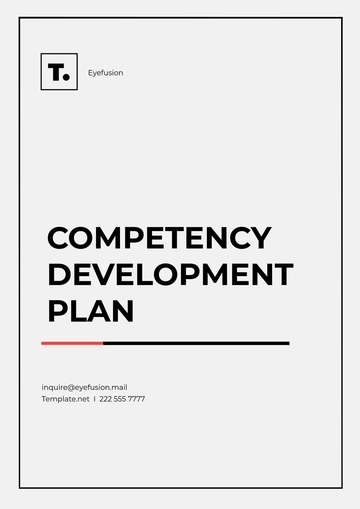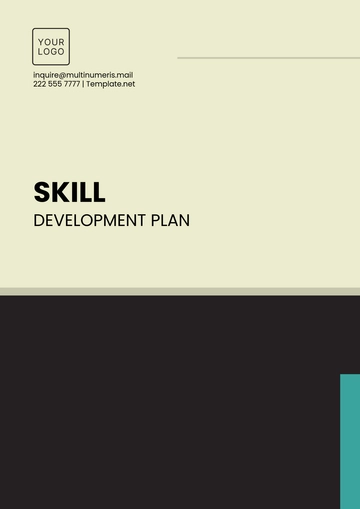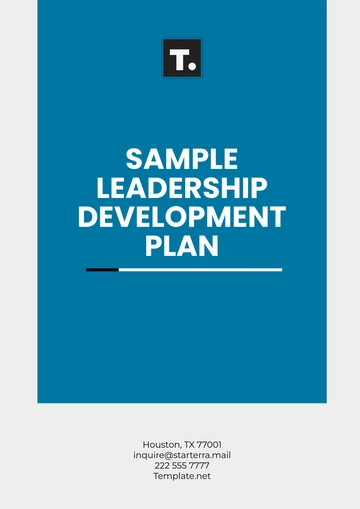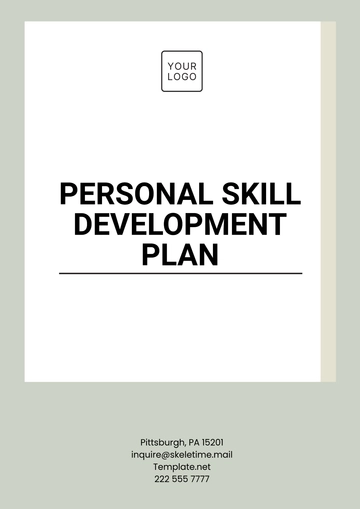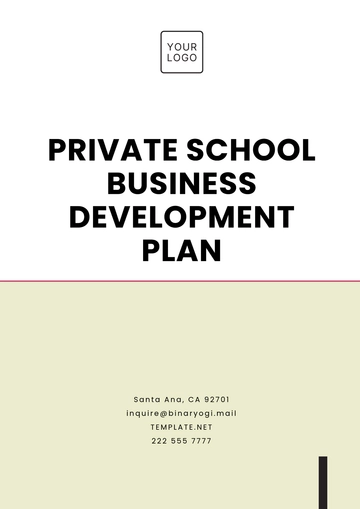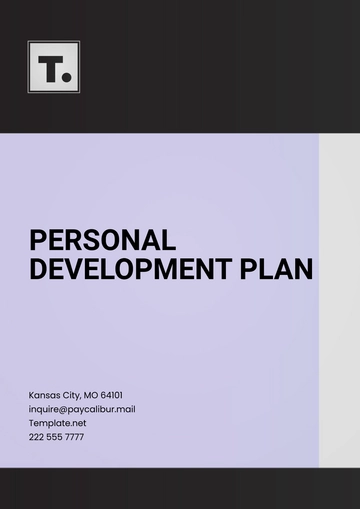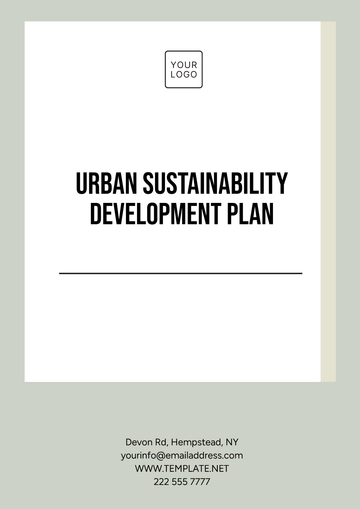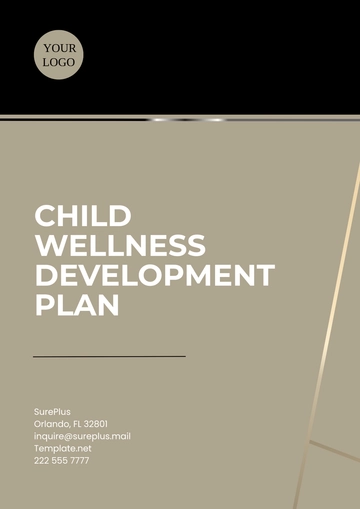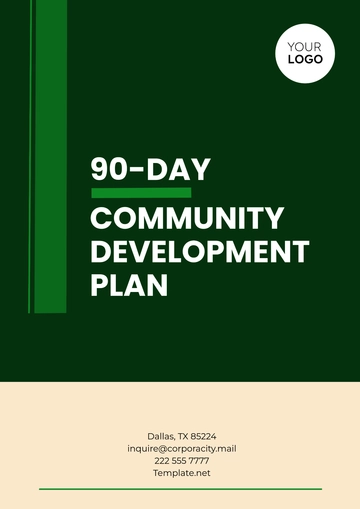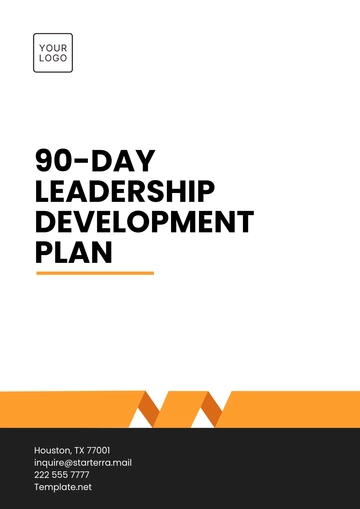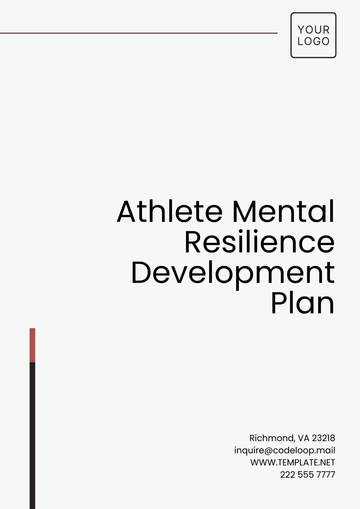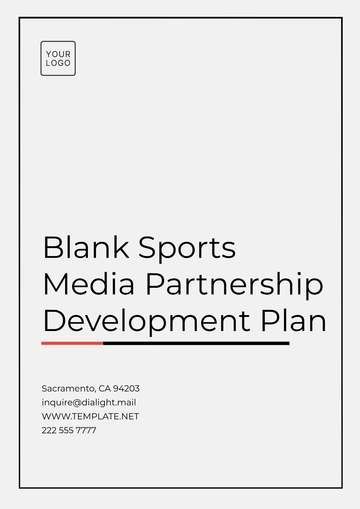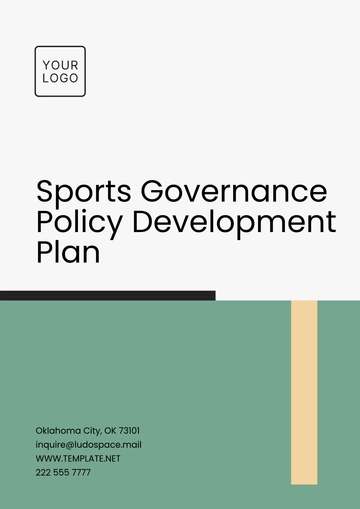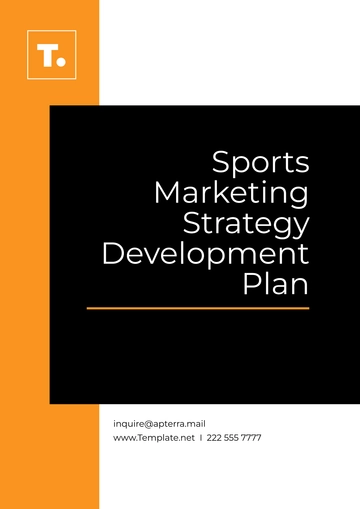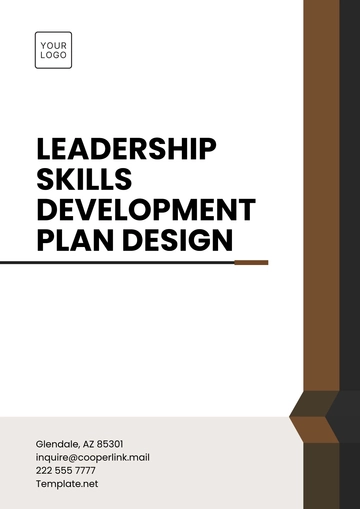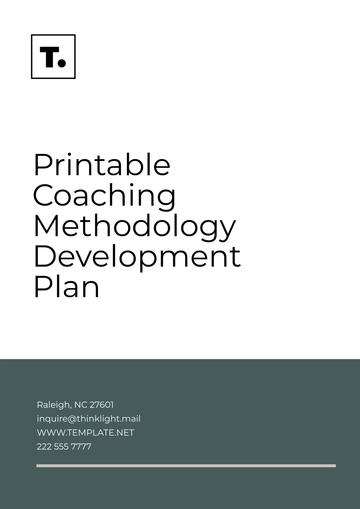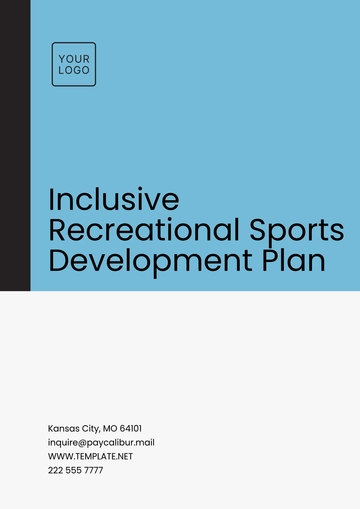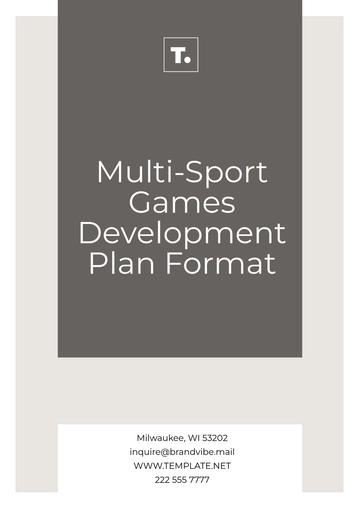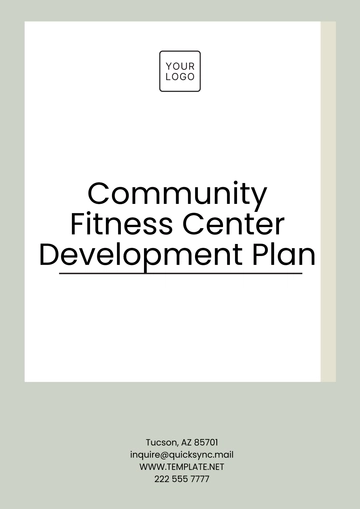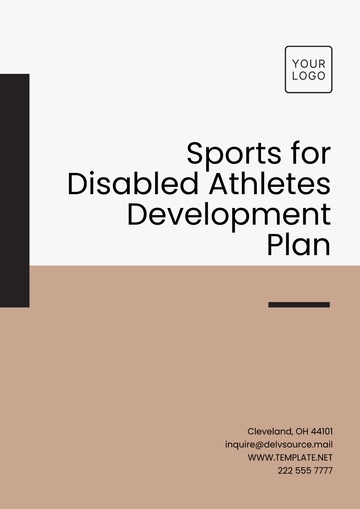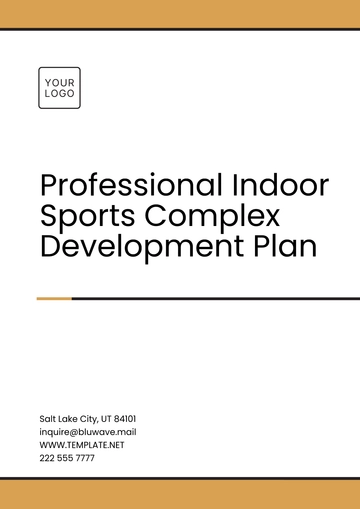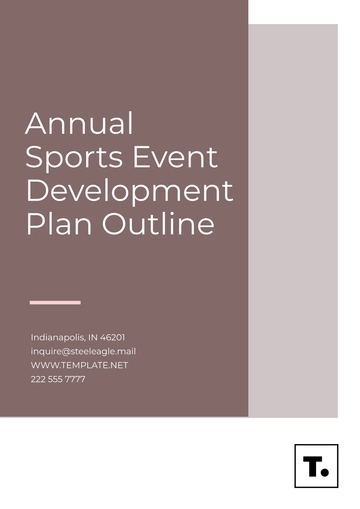Free Real Estate Staff Development Plan
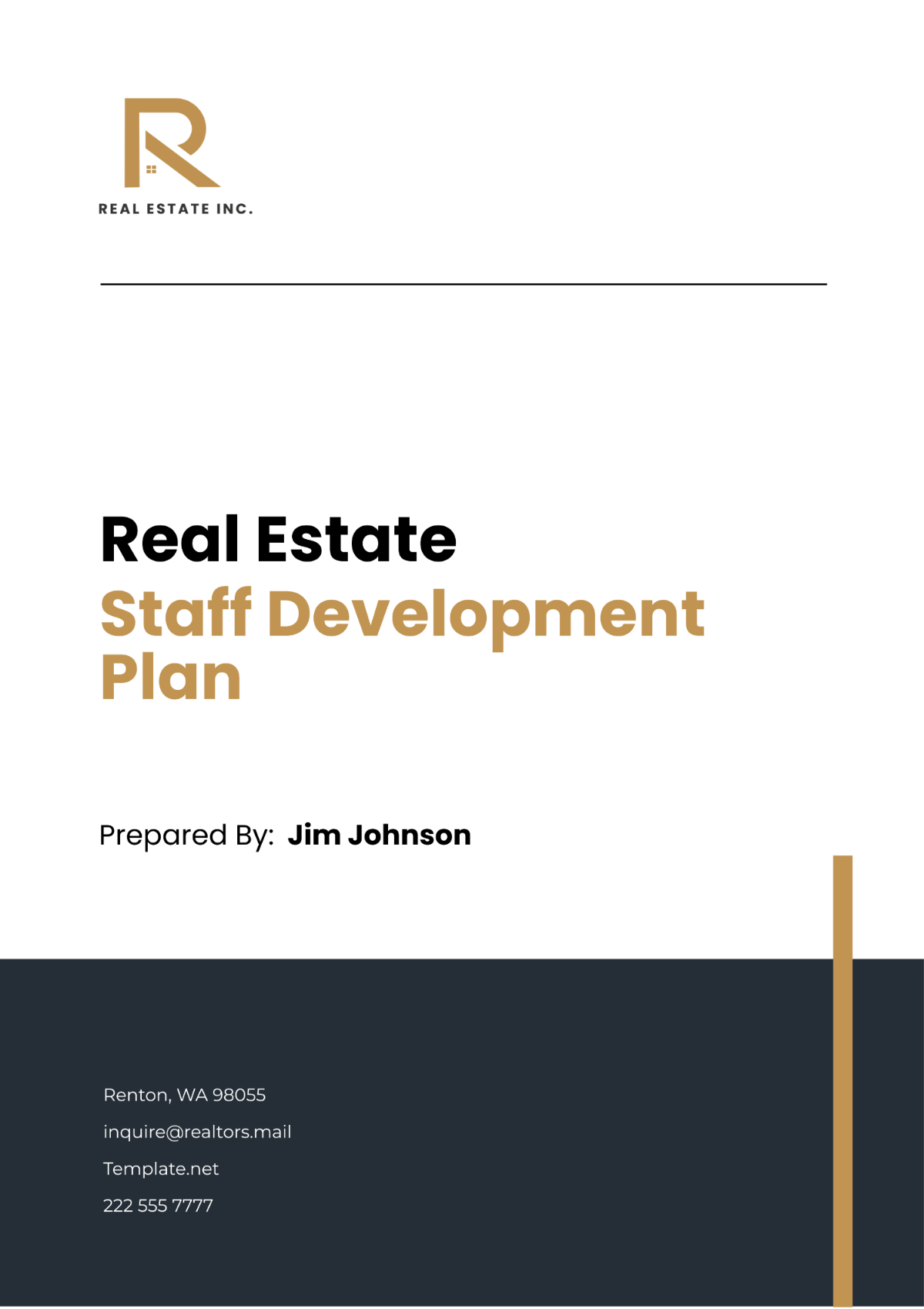
A. Introduction and Overview
Welcome to our comprehensive Staff Development Plan, a guiding framework designed to elevate the competency levels and efficiency of our esteemed real estate team members. At [Your Cleaning Services Company], we deeply understand that our employees are the cornerstone of our organization's success. As we aspire to reach new heights in the competitive real estate industry, we recognize the pivotal role that a skilled and empowered workforce plays in achieving our strategic objectives and enhancing our brand identity.
This plan represents our unwavering commitment to investing in the growth and development of our employees. By equipping our team members with the necessary skills, knowledge, and resources, we not only foster individual growth but also strengthen our collective capacity to deliver exceptional service and drive business growth. Through targeted training initiatives and continuous professional development opportunities, we aim to cultivate a culture of excellence, innovation, and continuous improvement within our organization. Together, we will embark on a journey towards achieving excellence in the real estate sector, guided by our shared vision and commitment to excellence.
B. Current Workforce Analysis
In order to formulate an effective staff development strategy, it's imperative to gain insight into the existing capabilities and areas for improvement within our real estate workforce. This section outlines the findings of our preliminary investigation, utilizing performance evaluations and stakeholder feedback to identify key development areas.
1. Performance Evaluation
Employee Performance Reviews
Individual performance evaluations were conducted based on established criteria and performance metrics.
Feedback from supervisors and peers was gathered to assess strengths and areas for improvement.
2. Skills and Competencies Assessment
Technical Skills Proficiency
Evaluation of employees' proficiency in key technical areas such as property management, leasing, sales, and customer service.
Identification of gaps in technical skills and knowledge.
3. Soft Skills Evaluation
Communication and Interpersonal Skills
Assessment of employees' communication abilities, including verbal and written communication, active listening, and rapport-building.
Evaluation of interpersonal skills crucial for client interactions and team collaboration.
4. Training Needs Identification
Key Areas Requiring Improvement
Analysis of performance data and feedback to pinpoint specific areas where employee development is most needed.
Identification of priority training needs to address skill gaps and enhance overall workforce effectiveness.
C. Training Needs Assessment
Before proceeding with our training initiatives, it's essential to conduct a thorough assessment of the specific development needs within our real estate team. This section outlines the identified areas requiring further enhancement, including market knowledge, statutory compliance, negotiation prowess, and client relations. Through targeted surveys and assessments, we aim to gain deeper insights to tailor our training programs effectively.
Training Needs Assessment | |
|---|---|
Identified Areas for Development |
|
Purpose | To conduct targeted surveys and assessments to gain deeper insights into the training needs of our real estate team, aligning our development initiatives with identified areas for improvement. |
Methodology | Targeted Surveys: Conduct surveys to gather feedback from employees on their perceived training needs and areas requiring improvement. Assessments: Administer skill assessments to gauge proficiency levels and identify gaps. |
Expected Outcomes |
|
D. Training Objectives and Goals
Building upon the identified needs, our Training Objectives and Goals are structured to fortify the foundation of our workforce with targeted development initiatives. Our foremost objective is to cultivate a team that possesses not only extensive knowledge but also exceptional skills in real estate practices. Central to our training strategy is the refinement of competencies in understanding market dynamics, ensuring adherence to regulatory frameworks, honing negotiation acumen, and elevating client relationship management.
Through a strategic focus on these pivotal areas, we aim to elevate the caliber of our service delivery and significantly enhance client satisfaction levels. By empowering our team members with the requisite expertise and proficiency, we are poised to surpass industry standards and establish [Your Cleaning Services Company] as a benchmark for excellence in the real estate sector.
E. Training Methods and Activities
In pursuit of our training objectives, a variety of training methods and activities will be deployed to ensure comprehensive skill development within our real estate team. This section outlines the diverse array of training platforms utilized, tailored to accommodate the varying learning styles and needs of our dynamic workforce.
Training Methods and Activities | |
|---|---|
Training Platforms | External Workshops: Participation in external seminars and workshops conducted by industry experts to provide insights into market trends, regulatory updates, and best practices. - Online Courses: Access to online learning platforms offering courses on relevant topics such as negotiation skills, compliance, and customer relations. - Mentoring Programs: Pairing team members with experienced mentors to provide guidance, support, and personalized development opportunities. - On-the- Job Training: Practical training sessions conducted within the workplace to enhance real-world skills and knowledge through hands-on experience. |
Purpose | To provide a diverse range of training opportunities tailored to accommodate the varying learning styles and needs of our real estate team, ensuring comprehensive skill development and alignment with organizational objectives. |
F. Resource Allocation
In order to effectively implement our training initiatives and ensure the success of our real estate staff development plan, it is crucial to allocate the necessary resources. This section provides an overview of the resources dedicated to our training programs, including budgetary allocations, time commitments from team members, procurement of materials, and engagement of external resources or trainers. By strategically allocating these resources, we aim to maximize the impact of our training efforts and facilitate the continuous growth and development of our workforce.
Resource | Allocation |
|---|---|
Budget for Training Programs | [$XX,XXX] (allocated annually) |
Time Investment from Team Members | Weekly: 2 hours per team member for workshops and training sessions |
Monthly: 4 hours per team member for on-the-job training and mentoring | |
Materials | Textbooks and manuals: [$XXX] per team member |
Digital learning resources subscription: [$XXX] per year | |
External Resources or Trainers | External workshops and seminars: [$X,XXX] per event |
Subject matter expert trainers: [$XXX] per hour |
G. Timeline and Implementation Schedule
The successful execution of our staff development plan relies on a well-defined timeline and implementation schedule. This section outlines the structured timeline established to guide the implementation of our training initiatives. With specific dates assigned to each training activity and clear accountability, we ensure efficient execution and alignment with our organizational goals.
Training Activity | Date |
|---|---|
External Workshop: Market Trends | [Month, Day, Year] |
Online Course: Regulatory Compliance | [Month, Day, Year] |
Mentoring Sessions: Negotiation Skills | [Month, Day, Year] |
On-the-Job Training: Client Relations | [Month, Day, Year] |
H. Monitoring and Evaluation
Our development plan integrates a robust Monitoring and Evaluation (M&E) strategy to gauge the effectiveness of our training initiatives. This section outlines the key components of our M&E framework, ensuring systematic tracking and evaluation of our staff development efforts.
1. Key Performance Indicators (KPIs)
Employee Performance: Assessing individual performance improvements following training interventions.
Productivity Metrics: Monitoring changes in productivity levels attributed to enhanced skills and knowledge.
Business Outcomes: Evaluating the overall impact of training on organizational goals and performance.
2. Review and Feedback Mechanisms
Regular Review Sessions: Scheduled reviews to assess progress against predefined objectives and KPIs.
Feedback Channels: Establishing channels for soliciting feedback from employees and stakeholders to inform future training iterations.
I. Feedback Mechanism
A feedback mechanism will be established to facilitate open communication and constructive dialogue between employees and the training program organizers.
1. Purpose
Enable employees to express their views and provide feedback on the training programs.
Facilitate continuous improvement by incorporating employee feedback into future training iterations.
2. Implementation
Anonymous Feedback Forms: Provide employees with anonymous feedback forms to express their opinions and suggestions.
Feedback Sessions: Organize periodic feedback sessions where employees can share their thoughts and experiences directly with program organizers.
This feedback mechanism will serve as a valuable tool for assessing the effectiveness of our training programs and making necessary adjustments to ensure their relevance and impact.
- 100% Customizable, free editor
- Access 1 Million+ Templates, photo’s & graphics
- Download or share as a template
- Click and replace photos, graphics, text, backgrounds
- Resize, crop, AI write & more
- Access advanced editor
Elevate your team's capabilities with the Real Estate Staff Development Plan Template from Template.net. This editable and customizable template is designed to outline personalized growth strategies for your real estate staff, focusing on skill enhancement and career progression. Editable in our Ai Editor Tool, it's crucial for fostering professional development, improving team performance, and driving your agency's success.
